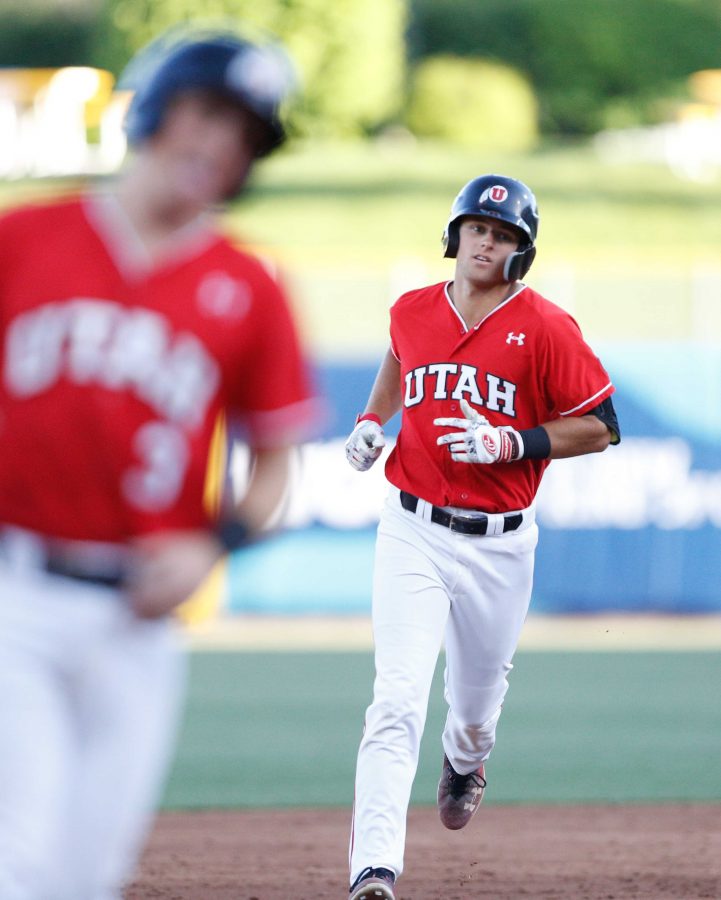The University of Utah baseball team found themselves at the end of the 2018 season with much to be desired of a program that has relative success in providing MLB talent. The Utes finished the season at 16-39 with an 8-22 record in Pac-12 play.
The questions are relatively simple: What happened? Where do we go now?
The Utes went into the 2017 season with high hopes. After cruising through the Pac-12/Big Ten Challenge — winning 3 of 4 tournament games — the Utes hit the grinder of conference play with few expectations. The Utes were looking to stay competitive in a top-heavy conference, ending the season with an extremely par record of 27-24. Against powerhouses like Washington and USC, the Utes constantly found themselves facing the gauntlet of West Coast baseball, where the sport is integrated into player’s lives early on and only continues to grow.
Utah began the 2018 campaign with a narrative that would stick with them throughout the course of the season. Close losses and devastating victories are a wonderful way to play a season if one doesn’t wish to know what kind of team they are dealing with. Lack of consistency can be hazardous to a team aspiring to rise to the top of a conference that also produced a College World Series winner in Oregon State University. The Utes were fielding a team that would either beat teams by more than ten or lose by five. This gap resulted in a few outcomes, none of them good: inconsistent play, low season totals for the Utes’ best players and low standings. How does a team drop six spots in one season?
The Utes began the 2018 season with one player — Dashawn Keirsey Jr.— who had MLB talent. After losing three pitchers to the draft last year, the only strength the Utes had was a more developed leadership core to lead Kersey and the younger players on the roster heading into the new season. This changing of the guard was obviously going to take some time, and it showed. The Utes found themselves behind in the Pac-12 early, not winning their first game until beating UC Riverside on March 11th. They lost the second game of that doubleheader. Consistent play continued to elude the team until the end of March when they won their first consecutive games against Sacramento State University. The Utes proceeded to bounce around the win-loss column as the season progressed, but their play within the Pac-12 is what would tank the team’s standing in the conference to last place. 16-39 is one problem, but only winning 8 conference games out of a possible 30 is simply not good enough.
Utah sports, in general, have had a tough time within the conference, not only because of the prominence of programs like USC and UCLA, but because Utah does not have the same access to recruits that powerhouse universities do. Although, that doesn’t excuse a .271 win percentage and an on-base percentage of .347.
The Utes are no strangers to having rough seasons on the diamond. From the U’s entry into the Pac-12 in 2011, the Utes have played seven seasons of baseball and their 2017 campaign was the first season in which they did not place first or last. The team went from a dismal 16-36-1 in 2015 to a conference-leading 26-29. The Utes did not win the most games in the conference by any means, but their success against conference rivals is what drove them to the top. The Utes have to play consistently if they hope to have any measurable success in the future — having MLB talent can only get you so far.
There is hope, however. The Utes have only lost one player to the MLB draft. Kersey was taken by the Minnesota Twins in the fourth round of the MLB draft on June 4th, 2018. The Twins selected Kersey with the intention of bolstering their outfield and hoping to utilize his abilities as a power hitter as they look to make the jump to a playoff team. The Twins ended last season behind the Cleveland Indians for first in the AL Central division, and have not won a World Series title since 1991.
In addition to losing Keirsey to the big leagues, seniors Josh Lapiana, Tanner Thomas, Trenton Stoltz and Wade Gulden are graduating out of the program. Losing five players can take a toll on a team’s makeup and chemistry, but three of the aforementioned players — Lapiana, Thomas and Stoltz — come from the bullpen. The Utes’ infield remains largely intact, and the outfield only has to substitute the loss of Keirsey. The Utes have yet to announce their incoming recruited freshmen, but addressing problems in the batter’s box should be a top priority. The Utes were outscored with little mercy from their opponents while their leading scorer, Keirsey was just selected in the draft. If the Utes wish to have any sort of competitive season on the diamond in years to come, there is an identity crisis that needs to be solved.



